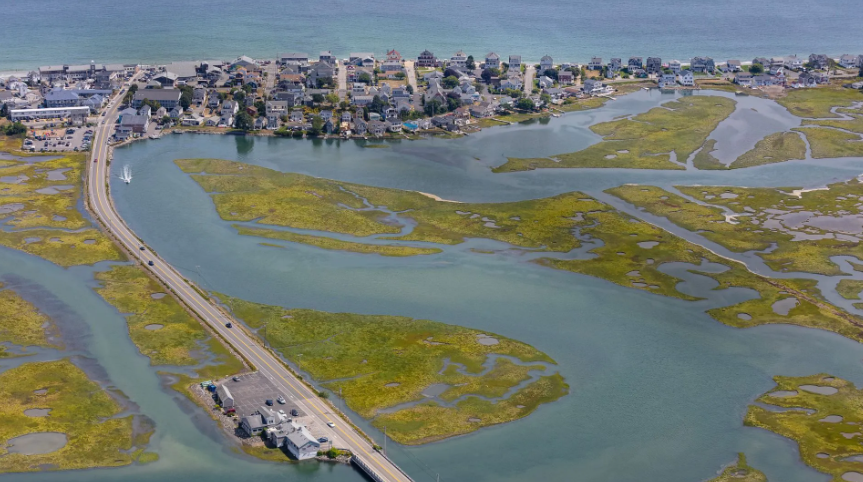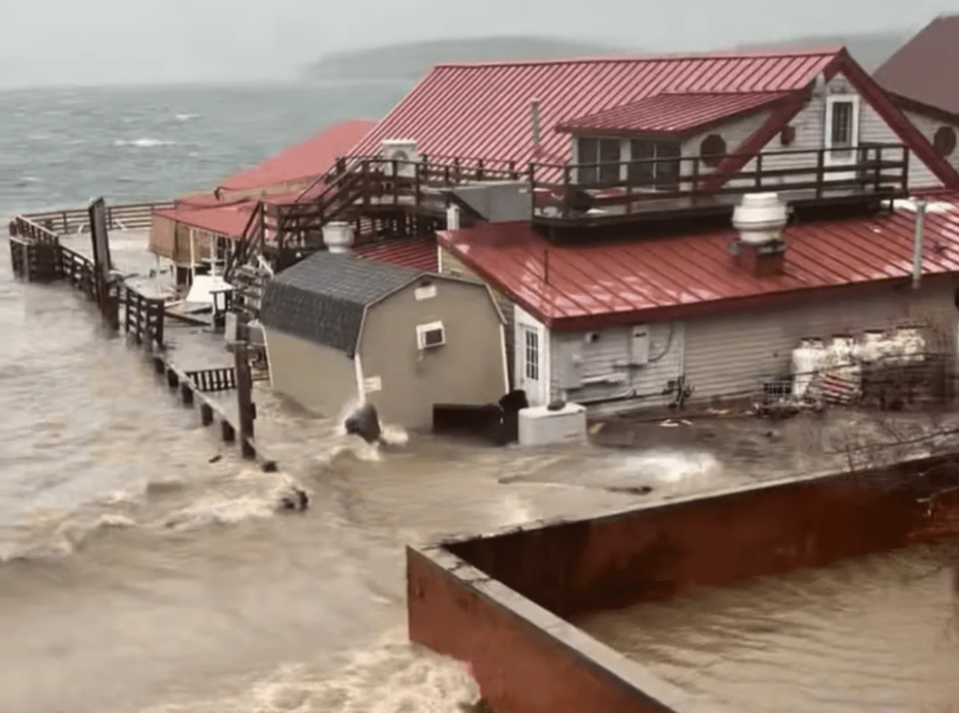Granite? Aluminum? Wood? Rethinking coastal infrastructure in wake of January’s storms
Kenneth Knauer, a project manager with Prock Marine, one of Maine’s largest marine contractors, is used to being busy. But the past few weeks have been an exception.
“We’ve been getting phone calls pretty steady ever since the storms hit,” said Knauer, referring to the back-to-back January storms that walloped the state’s coast, with gusts from the southeast clocking in at 92 mph in some places.
Commercial docks are taking priority, said Knauer, while residential customers will have to wait.
“We’ve been telling people for a residential dock or pier we won’t be able to get to them until the summer of 2025,” he said.

Navigating the world of shoreland zoning is complicated on a good day. Now, Prock engineers are trying to draft designs for new wharves, docks and piers that will make the infrastructure less vulnerable to rising seas and stronger storms while still meeting regulations set by communities, the Maine Department of Environmental Protection (DEP) and the U.S. Army Corps of Engineers.
There also are practical constraints, like lobster fishermen who need docks to be at a certain level to be able to unload or load their traps.
Marginal Way: Ogunquit’s coastal treasure closed due to storm damage
Many wharfs today are built at 6 feet above mean high tide, said Knauer, but he is recommending upping that to 8 feet, given the historic high tides seen in much of the state last month, which topped 14.5 feet in some places.
“When I first started, we would do 5 feet, then 6 feet," Knauer said. "The norm should be 8 feet above the mean high water.”
Meeting all these needs might mean not just building higher but changing up materials altogether. Some waterfront property owners, said Knauer, are rethinking wooden piers and docks and considering using aluminum instead, or adding concrete or granite structures below as supports.

Even concrete and stone, however, are no guarantee, said Knauer, and may not make sense everywhere.
“We’ve seen some large concrete slabs and granite walls get destroyed because they’re so rigid and compact,” he said.
Aluminum decking can be removed ahead of a storm, but if it’s left in place, creates a large surface area that could be impacted by the wind and waves.
“Wood pilings and wood decking are more breathable, and it’s cheaper to replace,” Knauer said. “Sometimes you have to think: ‘If something is going to break, how hard is it to fix?’”
Previous story: Maine coastal communities struggle to recover from storms that caused millions in damage
What works in one place might not work in another, said Knauer — everything is on a case-by-case basis.
“We normally go look at a site, give a proposal, and a lot of times refer them to other agents and engineers to help them get a permit,” Knauer said. “It seems like every town has their own little thing. Then you add DEP and the U.S. Army Corps of Engineers.”
Under the DEP’s “permit by rule,” anyone seeking to rebuild or repair a damaged structure as it existed prior to the storms is able to begin work two weeks after filing for a permit, as long as DEP staff haven’t raised any objections.
The Legislature’s Committee on Environment and Natural Resources is considering a bill to allow fast-track permitting and wharves built up to 4 feet higher than previously allowed.
More: Without a dune and seawall, Kennebunk's Seaside Inn owner fears the next big storm
Robert Wood, director of the Bureau of Land Resources for the DEP, said the bill would allow repair and replacement of wharfs, docks, and piers without a Natural Resources Protection Act permit, as long as the structure is the same as what existed before. The legislation would also allow the new structure to be 4 feet higher than previously permitted.
“A lot of folks who had damage are going to be repairing those structures, in some cases, replacing, and are very interested in bringing them up higher to be more resilient,” said Wood. “Some docks are right above the normal high water line.”
Chipman’s Wharf, a wholesale seafood and retail establishment in Milbridge lost 130 feet of dock and a bait shed in the storms, and is one of the many waterfront businesses tackling the rebuilding process.
Co-owner Amity Chipman said the family is working with an engineer on a design to make the wharf better able to withstand storms like the ones in January, which she said they had never encountered before. At the moment, the proposed wharf design might be higher and wider.
Chipman said that with the added height of the wharf, fishermen also likely will be making more regular use of hoists to lift traps. The company had two hoists that were lost in the storms.
Those who live and work on the waterfront have a short list of options as sea levels rise, as marine geologist Peter Slovinsky told the Monitor last year: “Do nothing, avoid, accommodate, adapt, protect and relocate.”
One thing, said Knauer, is for certain.
“Try as you might, you’re not going to stop the water.”
This story was originally published by The Maine Monitor, a nonprofit and nonpartisan news organization. To get regular coverage from the Monitor, sign up for a free Monitor newsletter here.
This article originally appeared on Portsmouth Herald: Waterfront owners rethink coastal infrastructure in wake of storms

